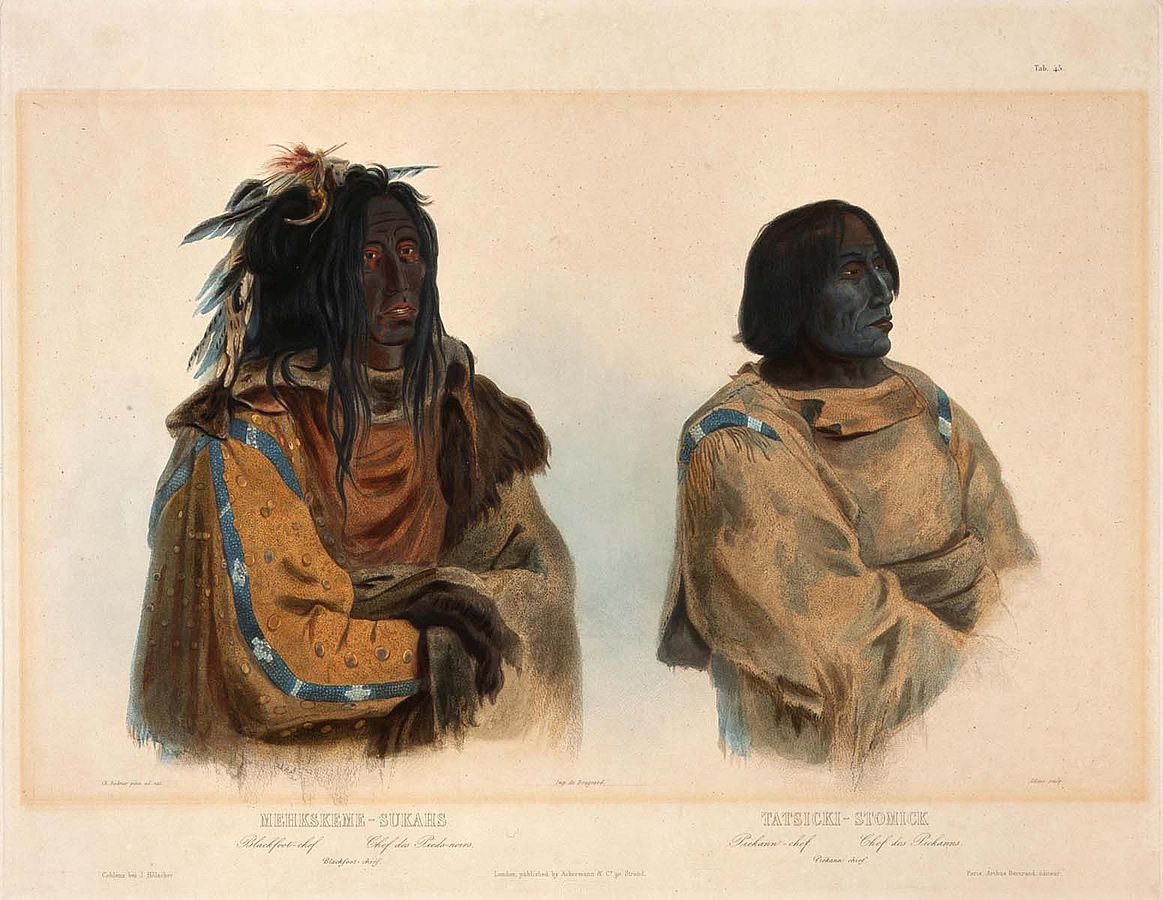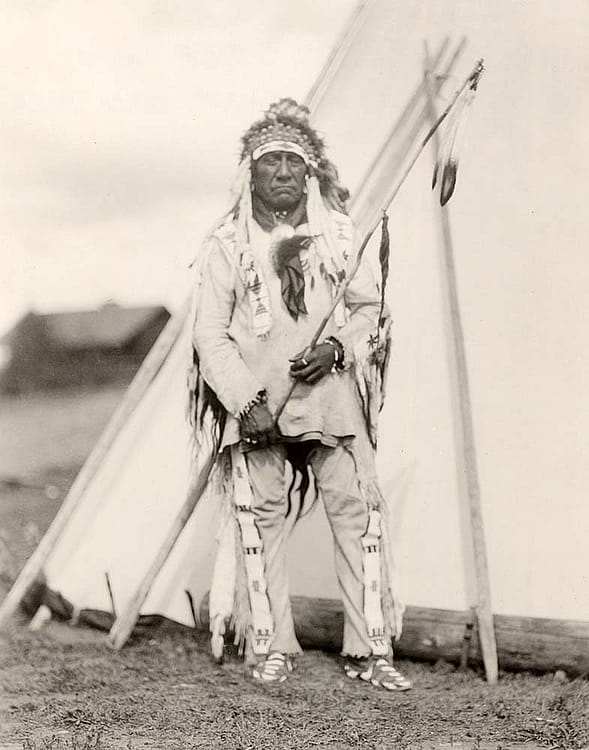Paul Dyck Collection: Blackfeet

The Blackfeet
The Blackfeet’s homeland originally covered what is now southern Alberta and western Saskatchewan, Canada, as well as central Montana. Today, the tribe resides on a reservation in Montana, adjacent to Glacier National Park and the United States-Canadian border.

The Blackfoot belong to a confederacy that originally included the Kainai (Blood), North Piegan and Siksika tribes of Alberta, and the South Piegan (Blackfeet) of Montana. The tribal name is Amoskapi Pikuni. In 1832 – 1833, the artists George Catlin and then Karl Bodmer, traveling with and drawing for Prince Maximilian zu Weid, put the total population at about 20,000. In 1837, a smallpox pandemic struck the upper Missouri River homeland of the Blackfeet, and the tribe was decimated—losing half the tribe.
The Blackfeet, as they are called in the United States, were known as great warriors. Bands were social units of the Blackfoot that usually consisted of 80 – 240 people. The band needed to be large enough to defend against enemies, but still small enough to be flexible. Each band had its own leader. They were defined by their residence rather than by family, so members could freely leave one band to join another. Because of this, bands were constantly changing

The Blackfeet tribes were nomadic, meaning they moved frequently to follow the herds of buffalo. During the winter, the Blackfeet lived close to a river valley, only leaving if food for the band or animals ran out. Upon the arrival of spring, the bands would hunt the buffalo that had started to move out into the grasslands.
During the summer, the tribe held a major tribal ceremony, the Sun Dance, for which all the bands came together. Other than the winter, when a few bands might join together for shelter, this was the only time the entire tribe gathered. It helped the bands get reacquainted and strengthened the ties between the tribe.
Once bison became nearly extinct in 1883, the Blackfoot were without food, and many starved to death the following winter. This was known as the Starvation Winter, a dark period in the tribe’s history.
The Blackfeet Nation was given a reservation of 26 million acres in 1851. But in 1896, the tribe (with its population reduced to 1,400 members) signed a $1.5 million agreement with the federal government relinquishing its western territory. This area became Glacier National Park on May 11, 1910.
Today, the Blackfeet Nation (Reservation) of Montana is a 1.5-million-acre reserve with mountains, foothills, lakes, and rivers falling onto the plains in the east. The population of the reservation is approximately 8,500 enrolled Blackfeet.
The man’s honorary shirt of the early 1800s, sometimes called a warshirt, were still made and worn after the days of Plains warfare were over. Used at tribal social and political gatherings, these shirts were often used by members of official delegations, and signified the wearer was a man of importance among his people.

This shirt belonged to Boy Chief, Siksika (Blackfoot). In this photograph from around 1910, he is wearing the shirt with leggings and an eagle feather bonnet. This beautiful shirt was created around 1900. It is made from two deer hides that were matched for size and shape. It has open sides with hide ties, and the sleeves are sewn closed. The deer “legs” at the bottom of the shirt are self-fringed, as are the cuffs on the sleeves. Wool wrapped ermine tubes and human hair are tied with sinew onto the arms along the beaded strips. The neck opening is covered with red wool cloth and also has hide ties for closure. The beaded strips on the arms and shoulders are embroidered in glass seed beads in floral and geometric patterns that are typical of the Blackfeet design or style of beading. The disks on the front and back of the shirt are also fully beaded and edged with looped beadwork. It is unusual to find an original photograph image of a person wearing a shirt that is part of a museum collection.
